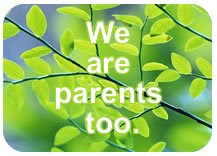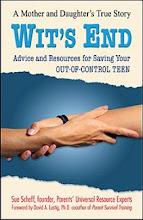
“They feel very out of control; it’s very scary. They will literally have blackouts, and what we are seeing is a lot of people having accidents because they lose their coordination. They aren’t able to think clearly, so we are seeing people fall, stumble, hurt themselves, and have driving accidents.”
– Heather Hayes, LPC, drug counselor
Today, more teenagers are smoking a powerful hallucinogenic herb that is native to Mexico. It is a potent drug, the effects are almost instantaneous, and because it is legal in most states, it has caught the attention of lawmakers around the country.
Henri and Thomas say they have a friend who’s tried it. It’s called Salvia.
“He smoked it, and then went to scratch his head … and can’t remember anything after that,” says Henri Hollis, 18.
Add Thomas Steed, 18, “His friend said he was just going like this [flailing his arms] for like 20 minutes straight.”
In most states, salvia is legal. However, the Drug Enforcement Agency (DEA) has salvia on its list of “Drugs and Chemicals of Concern.” On the streets and in head shops, salvia is also referred to as “magic mint,” “sally-d” and “diviner’s sage.”
“My friend just brought some over one day, and I was like, ‘Alright!’ says Nick Nehf, 18. “I mean, I’d never heard of it before, but he said he had bought it down the street at the head shop and I was like, ‘Alright, whatever.’”
“Salvia divinorum is a perennial herb that grows wild in Mexico. It’s a hallucinogenic. It’s what back in the 60s we used to call a psychedelic,” says Heather Hayes, licensed professional counselor (LPC) and drug counselor.
Experts say that salvia affects the brain nearly 10 times faster than cocaine, and targets the parts of the brain responsible for motor function.
“They feel very out of control; it’s very scary. They will literally have blackouts, and what we are seeing is a lot of people having accidents because they lose their coordination. They aren’t able to think clearly, so we are seeing people fall, stumble, hurt themselves, and have driving accidents,” says Hayes.
Many states are now considering legislation to ban salvia.
In the meantime, experts say, explain to your kids that just because something is temporarily legal doesn’t mean it is safe.
“Initially, when the drug Ecstasy was developed it was not illegal, but shortly after it was,” says Hayes. “And now we know that Ecstasy is extremely damaging to the brain -- we have people who die after one use. So that would be the analogy I’d give.”
“Anybody who I’ve talked to who has done it says they are never going to try it again because it was too much for them,” says Steed.
Tips for Parents
Partnership for a Drug-Free America and the Media Awareness Program offer these tips to help keep kids from using drugs:
It sounds simple, but one of the best ways to keep your kids drug-free is to show them you care. Simple gestures like an unexpected hug or saying ‘I love you" everyday can help kids gain the confidence to say no to drugs.
Look for teachable moments. Talk about a recent drug or alcohol-related incident in your family or community.
Explain the principles of "why" and not just "what" to do or not do.
Teach real-world coping skills: drug prevention can start by building a teen's confidence for a job interview or teaching a child how to rebuff a schoolmate who wants to copy homework.
Parents remain one of the strongest moral influences on kids, and they need to send a clear anti-drug message. Studies show that parental ambivalence increases a child's risk for drug use.
Focus on one drug at a time: there's strong evidence that media attention to harmful effects of specific drugs has made a difference.
For instance, a 1995 ad campaign about abuse of inhalants, such as paint thinners and glues, precipitated a drastic drop in use.
In 1986, cocaine use fell after extensive news reports on the death of Len Bias, a college-basketball star who died after using cocaine.
(Currently, Heath Ledger’s death has prompted drug rehabilitation for other celebrities as well as the general population.)
These examples illustrate the life cycle of a drug. Word of a drug's “benefits” spreads rapidly, but there is a lag time before kids learn about the dangers. Once the risks become apparent, occasional users drop the drug and potential new users don't try it. Parents and educators can make a difference if they pay attention to the life cycle of a newly popular drug and work to quickly spread the word about harmful effects.
Don't lecture: the use of lecturing is often cited as the single biggest flaw in the best-known and most popular anti-drug programs. Get kids more involved in the lesson, such as asking them to discuss how they'd react at a party where kids were drinking.
Repeat the message: the most successful anti-drug classes are those that are presented over the course of a child's school career.
References
Partnership for a Drug-Free America
Media Awareness Program




































